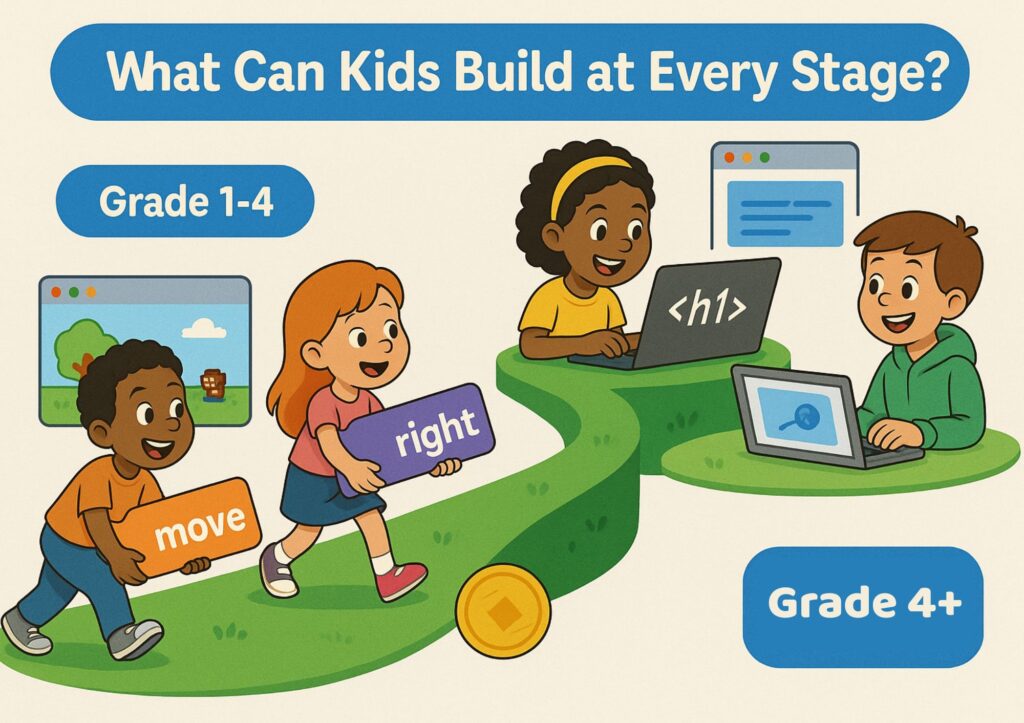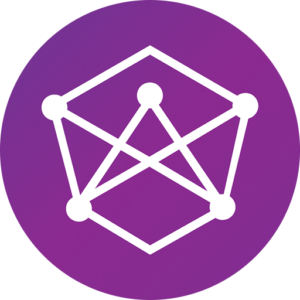“Web development? Isn’t that a bit too early for kids?”
If you’ve ever had that thought, you’re not alone. But here’s the thing—kids today aren’t just watching videos or playing games online. They’re curious. They’re exploring how things work. And many of them are already asking, “How do I make my own website?”
Learning web development is a lot like learning a new language. Except this one helps your child build real things on the internet. Learning this language is not about pushing them into tech careers early—it’s about giving them a skill that boosts their confidence and helps them grow in today’s digital world.
You don’t need to be tech-savvy yourself to support them. This guide will walk you through everything you need to know.
Why Should Kids Learn Web Development?
Let’s face it—today’s kids swipe before they write, ask Alexa more questions than us, and sometimes even fix the Wi-Fi faster than we can. So why not go a step further and help them create what they see online?
Here’s why web development is actually a superpower in disguise:
- It tickles both sides of the brain
Coding might sound technical, but it’s also creative. Kids get to design how a website looks (hello, colours and fonts!) and also decide how it works (like what happens when you click a button). - They start seeing the ‘why’ behind things
Ever wondered how that online quiz knows your favourite pizza topping? Or how buttons make things move on a page? Web development helps kids figure out the ‘how’ and ‘why’ behind the tech they use every day. - Mini frustrations = major life skills
Yes, sometimes a semicolon will be missing, and things won’t work. But every tiny fix builds patience, grit, and that “I got this!” attitude. Problem-solving becomes second nature to them. It’s a skill no school subject can ever over-teach. - It can grow with them
Today, it’s a simple “My Favorite Animal” webpage. Tomorrow? Maybe a full-blown blog, a portfolio, or even an online business. Web development starts as a fun hobby but can evolve into something bigger—something your child builds with pride.
So, no—it’s not too early. It’s just the right time to give them the tools and let their curiosity take the lead.
What Age Is Best to Start?

Let’s clear one thing up—kids don’t need to grow a mustache before they learn to code. The earlier they start, the better! But how early is too early? Good question.
Here’s a rough guide:
- Grade 1–4: The “I-like-buttons-and-bright-colours” phase
At this age, kids love to click, drag, and make stuff move. Perfect! Tools like Scratch or Tynker let them build fun games and stories using blocks of code. No scary syntax. Only play and logic sneaking in behind the scenes. - Grade 5 onwards: The “I-want-to-build-real-things” phase
Once they’re past the drag-and-drop stage, kids are ready to dive into the real deal—HTML, CSS, and even JavaScript. They can build simple websites, add fun animations, or create mini-projects like interactive quizzes and portfolios. This is when they start saying, “Whoa, I made that!” And yes, it’s as cool as it sounds.
You can read our blog article detailing how every child can get into the coding ecosystem without any hassle here.
Of course, every child is different. Some 8-year-olds might already be building websites, while others just want to draw cats. Fine. The goal isn’t to rush—it’s to spark interest. And once that spark is lit, there’s no stopping them.
The Basic Building Blocks of Web Development
Now let’s get a bit fundamental with web development. Let’s break it down into three parts. Every cool website your kid will build is powered by this dream team: HTML, CSS, and JavaScript.
- HTML (The Skeleton)
Think of HTML as the bones of every website. It holds everything up and gives structure to the website. HTML decides where the text will go, where images will be placed, and how everything will be arranged in terms of sections. HTML sets up the floor plan of a house before you can decorate it. - CSS (The Clothes)
What good is a skeleton without something to cover it up? This is where CSS comes in. CSS is the wardrobe for every website. It takes the structure created by HTML and makes it look attractive. With CSS, developers provide colors, fonts, spacing, and even how things move when you hover over them. - JavaScript (The Personality)
Bones-DONE. Clothes-DONE. Now it’s time to add personality using JavaScript. It is the behind-the-scenes magic that makes a website interactive. A button that does something when clicked, a cool animation, or a game that reacts to your actions—JavaScript makes a website move and respond to what users do. It’s the vibe.
So, in a nutshell:
- HTML is the skeleton (the structure),
- CSS is the clothes (the style),
- JavaScript is the personality (the interaction).
That’s the foundation of every website your child will build—simple, but powerful!
Best Tools and Platforms for Kids in 2025
Now that the basics are done, it’s time to put them to use with some fun and interactive tools! These platforms are perfect for bringing their coding knowledge to life and creating their own websites:
- Whizen – At Whizen, we help kids get started with learning to code with courses that give them the foundation they need to thrive in the tech-driven future. Check out our offerings today!
- Udemy – Think of it like Netflix, but for learning! Udemy has tons of beginner-friendly web development courses for kids and teens. Building a simple webpage. Done. Diving into HTML and CSS. Done. There’s a course that makes learning feel easy and cool.
- Glitch – Want your child to build something cool? Glitch lets them create projects and see their code come to life instantly. It’s simple but powerful!
- Thimble by Mozilla – Here’s where the magic happens! Kids get to mess with real website code and see their changes instantly—just like a real web developer!
- Replit – Older kids ready for a bigger challenge? Replit lets them build everything from simple apps to full-fledged websites. Plus, they can team up with friends on projects!
Conclusion
So, there you have it! Web development for kids is not only possible but also a whole lot of fun. With the right tools and a bit of guidance, your child can dive into this exciting world and start crafting their own story.
FAQs
What’s the right age for my child to start learning web development?
Kids can start as early as Grade 1–4 with simple tools like Scratch. From Grade 5 onwards, they can dive into HTML, CSS, and JavaScript.
Does my child need to know math or typing to start coding?
Nope! Basic reading and using a mouse or keyboard are enough to get started. The rest they’ll pick up along the way.
Is web development safe for kids to learn online?
Yes, as long as they use kid-friendly platforms and are guided by a parent or teacher. Always check for age-appropriate content.
Can my child build real websites?
Absolutely! Kids in Grade 5+ can start building real, working websites with help from simple tools and guided lessons.
What tools are best for beginners?
Tools like Scratch, Thimble, Replit, Glitch, and courses on Whizen or Udemy are great places to begin.
How much time should kids spend learning to code?
Even 30–45 minutes a day, a few times a week, can make a big difference. Keep it fun, not stressful!
Does Whizen offer offline classes?
Yes! Whizen has offline coding classes in Siliguri with separate programs for different age groups.
What’s the difference between coding and web development?
Coding is a broader skill. Web development is a type of coding that focuses on building websites.
Is this just a hobby, or can it lead to a real career?
It can be both! Learning now builds future-ready skills your child can use in school, college, or even a job.
My child isn’t a “tech kid.” Can they still enjoy this?
Of course! Web development is like digital Lego—creative, visual, and fun. Every kid can find something they love.




